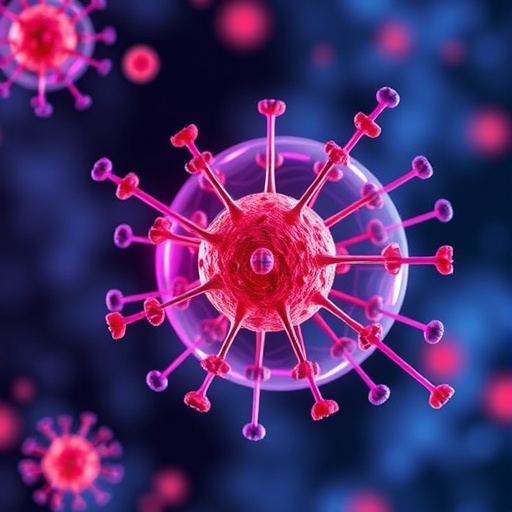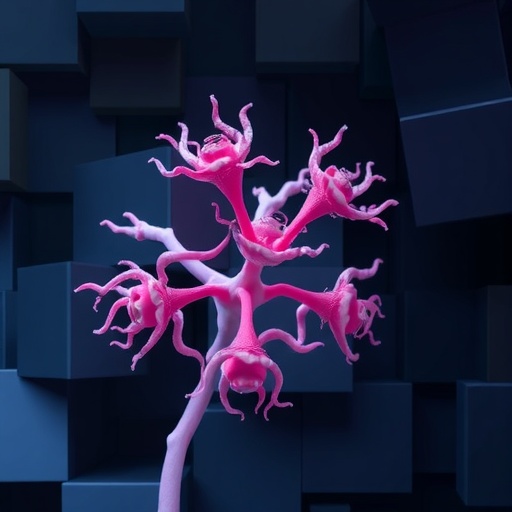Researchers from Charité – Universitätsmedizin Berlin have analyzed the underlying electrophysiological indicators of subarachnoid hemorrhage, the second most common type of brain hemorrhage that can lead to ischemic stroke within a matter of days. Their findings, which have been published in the journal Brain*, may lay the foundations for new stroke treatments.
Subarachnoid hemorrhage is a type of brain bleed that occurs in the area between the membranes surrounding the brain. Patients with subarachnoid hemorrhage can develop complications within approximately one week. Between one in three and one in four patients will develop symptoms of ischemic stroke, a type of stroke caused by an inadequate blood supply. This phenomenon occurs as the result of mechanisms triggered by the molecular breakdown products of the patient's earlier hemorrhagic stroke. It sets off a wave of electrochemical depolarization, or 'spreading depolarization', within the brain tissue. Affected areas of the brain require large amounts of energy in order to restore normal conditions.
In healthy brains, this depolarization of nerve cells is linked to blood supply, meaning blood vessels widen in areas of the brain that are active. However, a subarachnoid hemorrhage may disrupt the signaling cascades between nerve cells and blood vessels, so that the depolarization of nerve cells causes extreme constriction of the blood vessels, which leads to spreading ischemia. Deprived of energy, the nerve cells are incapable of restoring normal electrochemical gradients. If depolarization persists for too long, affected nerve cells will begin to die off. Measurements of the electrical brain potential will then show an extreme and very gradual change , a process known as 'negative ultraslow potential', which is indicative of 'terminal spreading depolarization'.
"Two months ago, we were able to show for the first time that terminal spreading polarization occurs in humans – namely in patients who had suffered cardiac arrest. Now we have been able to show that it also occurs in patients with cerebral infarctions after subarachnoid hemorrhage," explains Prof. Dr. Jens Dreier of Charité's Center for Stroke Research Berlin (CSB). Prof. Dreier and his team analyzed data from 11 patients, comparing their findings with results obtained from animal experiments. The waves of depolarization observed indicate disturbances of energy metabolism. The 'negative ultraslow potential' constitutes the electrophysiological correlate of infarction, and of tissue death due to an inadequate supply of blood.
Prof. Dreier emphasizes: "Measurements of spreading depolarization may prove as important to the development of interventions for patients with stroke, global ischemia and traumatic brain injury, as similar electrophysiological tools have proved in the past, in the areas of epilepsy or cardiology – because they make the underlying causes visible."
###
*Lückl J, Lemale CL, Kola V, Horst V, Khojasteh U, Oliveira-Ferreira AI, Major S, Winkler MKL, Kang EJ, Schoknecht K, Martus P, Hartings JA, Woitzik J, Dreier JP. The negative ultraslow potential, electrophysiological correlate of infarction in the human cortex. Brain, Volume 141, Issue 6, 1 June 2018, Pages 1734-1752, DOI: 10.1093/brain/awy102.
Contact:
Prof. Dr. Jens Dreier
Charité – Universitätsmedizin Berlin
Center for Stroke Research Berlin (CSB)
Tel: +49 30 450 560 024
Email: [email protected]
Links:
- Center for Stroke Research Berlin (CSB)
- Publication in Brain
Media Contact
Dr. Jens Dreier
[email protected]
49-304-505-60024
http://www.charite.de
https://www.charite.de/en/service/press_reports/artikel/detail/elektrophysiologisches_signal_des_hirninfarkts_identifiziert/
Related Journal Article
http://dx.doi.org/10.1093/brain/awy102




